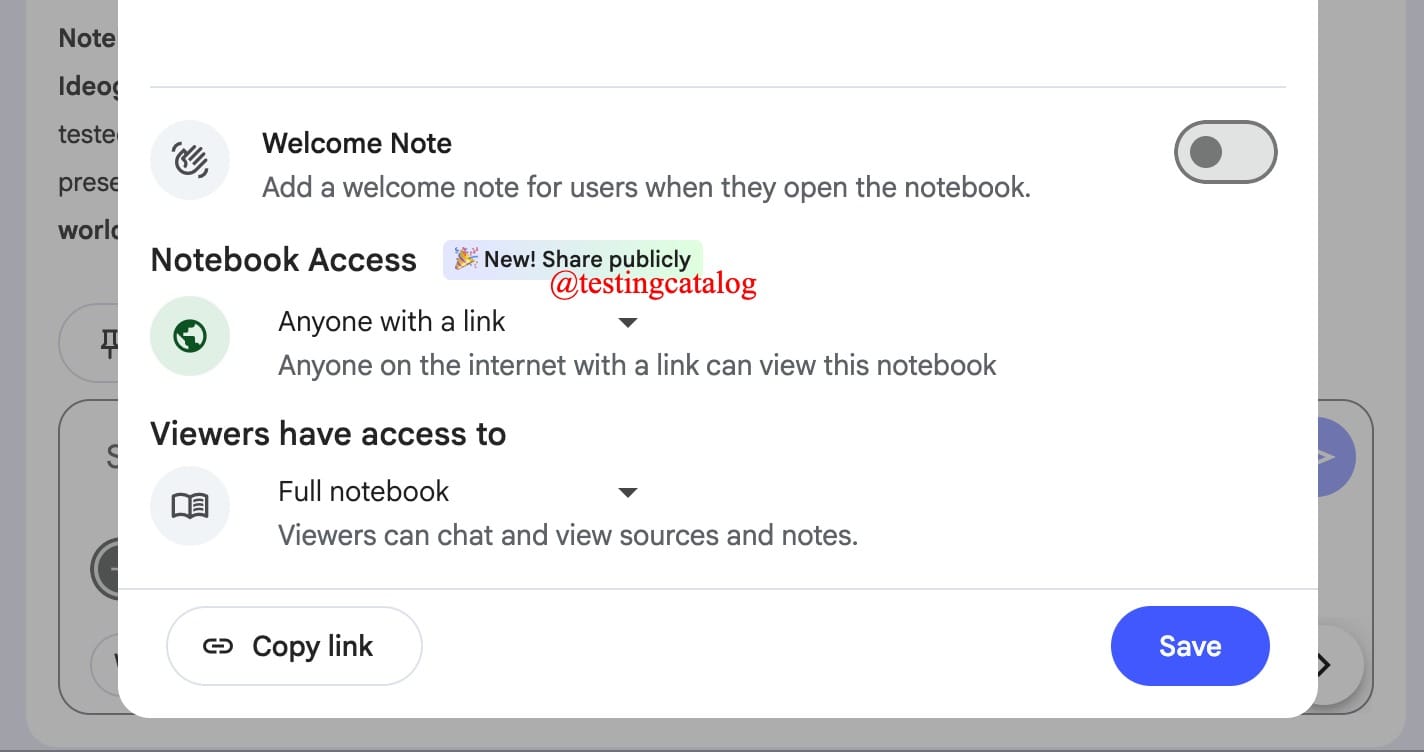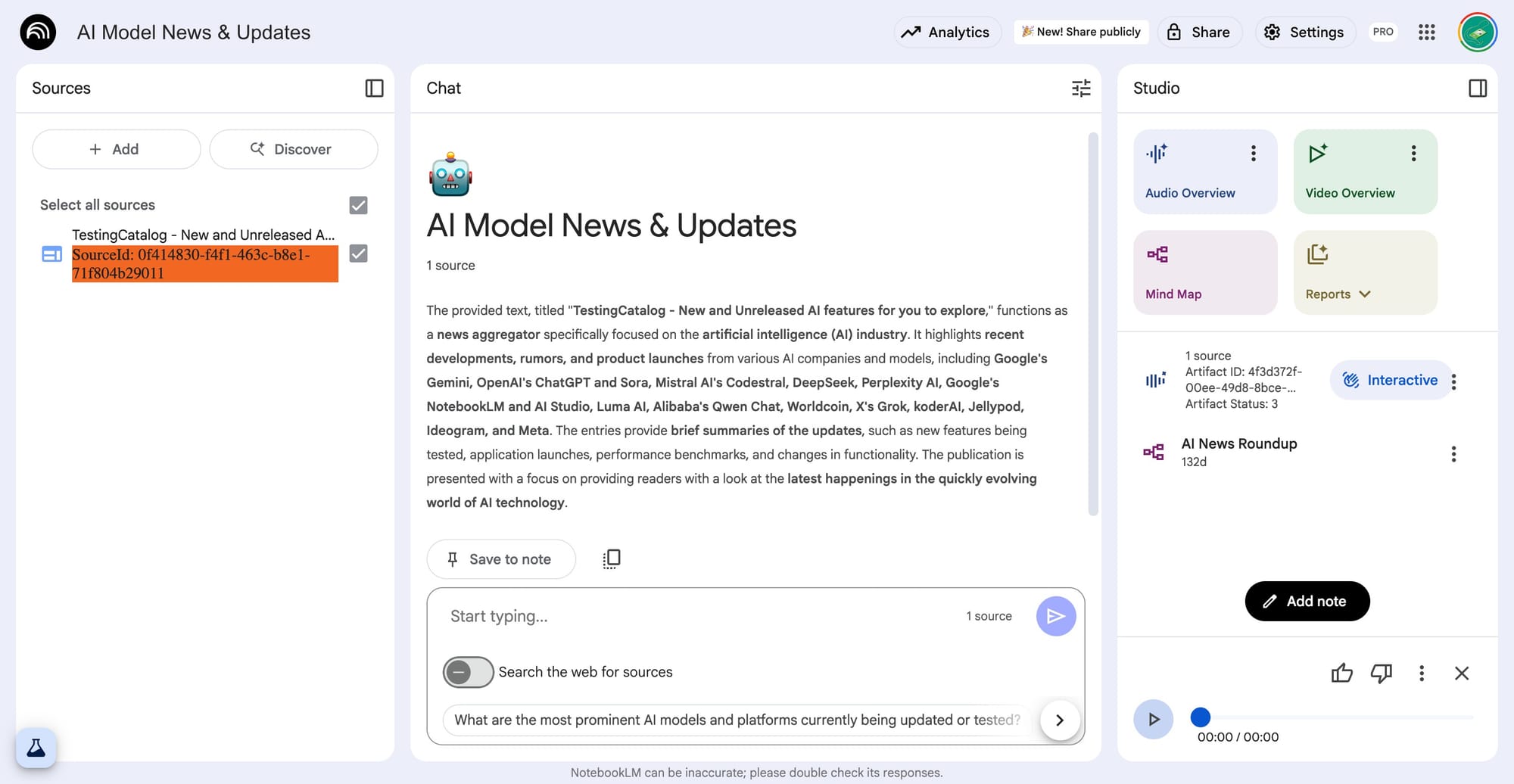Google is progressing on several fronts with NotebookLM, pointing toward broader public functionality and richer media capabilities. One of the most tangible updates is the upcoming public sharing for notebooks, which is now indicated by a new label in the UI.
Although still unreleased, the presence of a publicly accessible NotebookLM project summarizing the recent Google I/O suggests this capability is being tested externally.
We covered a LOT of ground today. Fortunately, our friends at @NotebookLM put all of today’s news and keynotes into a notebook. This way, you can listen to an audio overview, create a summary, or even view a Mind Map of everything from #GoogleIO 2025. https://t.co/8xhSv89uMI pic.twitter.com/5LcUYfURls
— Google AI (@GoogleAI) May 20, 2025
Once enabled, it would allow researchers, educators, and content creators to distribute curated knowledge bases without requiring recipients to register or duplicate the content.

Another in-development feature centers on multimedia summaries. A redesigned tile in the right-hand panel hints at deeper support for video overviews, expanding upon the current system which only supports audio. While users can already control the duration of these audio summaries and use an interactive playback experience, video functionality appears to be gated behind ongoing backend development. Video generation will likely roll out only once this revamped panel and its associated components are stable.
That's not all folks... Long story short, you can now control the length of your Audio Overviews (English only, but more soon!)
— NotebookLM (@NotebookLM) May 20, 2025
With short (~5+ min), long (~20+ min), and default (~10+ min) settings, try fully customizing the depth and length the AI hosts discuss your sources! pic.twitter.com/q7tPG1l0j0
These improvements fit into Google’s broader push to make NotebookLM a dynamic assistant for research and content repurposing. By layering in public sharing and media summarization, the tool is becoming more attractive for public-facing content strategies, especially for education and media documentation workflows. All of these developments are visible in the live app or spotted in production code, suggesting gradual rollout rather than distant planning.






